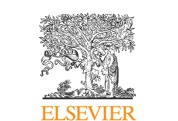Apr 30 2009
An unlikely multidisciplinary scientific collaboration has discovered that an electronic nose developed for air quality monitoring on Space Shuttle Endeavour can also be used to detect odour differences in normal and cancerous brain cells. The results of the pilot study open up new possibilities for neurosurgeons in the fight against brain cancer.

Neurosurgeons from the City of Hope Cancer Center, along with scientists from the Brain Mapping Foundation in West Hollywood and the Jet Propulsion Laboratory (JPL) in Pasadena, used NASA's electronic nose to investigate the role of cellular odours in cellular trafficking, brain cancer metastasis, stem cell migration, and the potential of the device to be used for intraoperative imaging.
The electronic nose, which is to be installed on the International Space Station in order to automatically monitor the station's air, can detect contaminants within a range of one to approximately 10,000 parts per million. In a series of experiments, the Brain Mapping Foundation used NASA's electronic nose to sniff brain cancer cells and cells in other organs. Their data demonstrates that the electronic nose can sense differences in odour from normal versus cancerous cells. These experiments will help pave the way for more sophisticated biochemical analysis and experimentation.
Babak Kateb, lead author of the paper, Chairman and Scientific Director of the Brain Mapping Foundation, said: "This pilot study lays the groundwork for future research that may help us to better understand cellular trafficking, contribute to designing better approaches for the detection and differentiation of brain cancer, and understand the pathophysiology of intracranial gliomas."
The results of the pilot study are set to be published in an IBMISPS-NeuroImage special issue in July, and presented at the 6th Annual World Congress for Brain Mapping & Image Guided Therapy at Harvard Medical School, August 26-29, 2009 (www.ibmisps-worldcongress.org).
The Brain Mapping and Image Guided Therapy World Congress, co-hosted by Elsevier, aims to break boundaries and explore break-through research in neuroscience, technology, medicine and healthcare policy.
A multidisciplinary forum, the Congress attracts prominent scientists, surgeons, engineers, rehabilitation medicine physicians, neurologists, neurosurgeons, radiologists, psychiatrists, cardiologists, pulmonologists, bioethicists, policy makers, government officials, neuroeconomists, physicists, graphic designers, computer scientists, healthcare professionals and executives, students, post-doctorates, residents, and fellows.
The Congress is also supported by the US Army Telemedicine Advance Telecommunication Research Center (TATRC), Defence Veteran Traumatic Brain Injury Center (DVBIC) and industry leaders such as Medtronic and BrainLab.
For more information about session topics, speakers, registration, travel and lodging, please visit: www.ibmisps-worldcongress.org